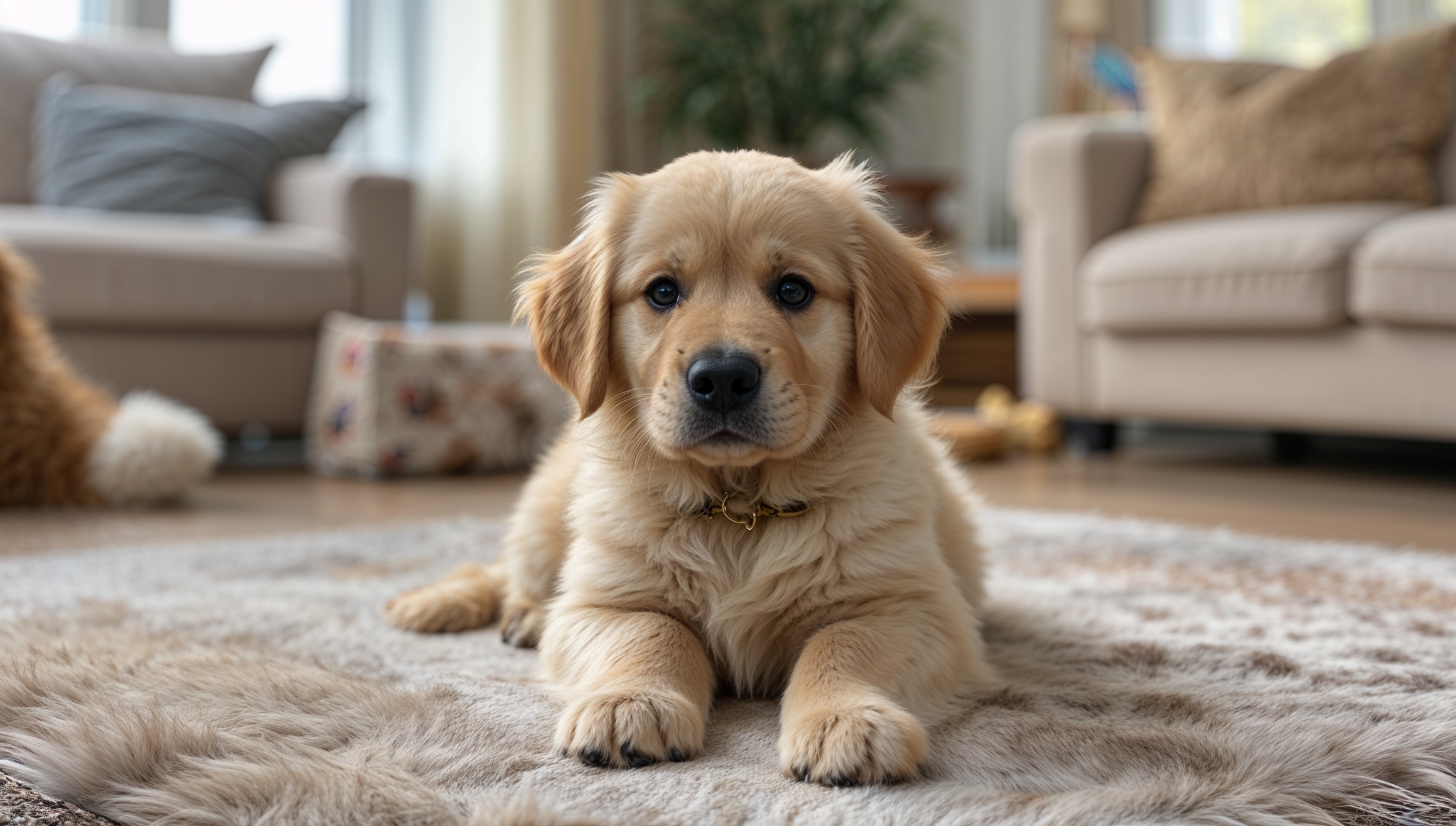Puppy Training in 7 Days – The Ultimate Step-by-Step Guide for a Well-Behaved Pup
Introduction
Bringing home a new puppy is an exciting adventure, but without proper training, that excitement can quickly turn into frustration. Puppies are like sponges, eager to learn and please their owners, making early training essential for a well-behaved companion.
If you’re wondering how to train a puppy fast, this 7-day training plan will set the foundation for good behavior. With consistency, patience, and positive reinforcement, you can teach your pup essential skills, from potty training to basic commands. Let’s dive in!
7-Day Puppy Training Plan
This structured approach ensures your puppy learns essential skills without being overwhelmed.
Day 1: Name Recognition & Bonding
Goal: Teach your puppy their name and start building trust.
- Pick a short, clear name and use it frequently in a happy tone.
- Sit with your puppy, say their name, and reward them with a treat when they look at you.
- Repeat this several times throughout the day to reinforce name recognition.
- Engage in gentle play and cuddles to build trust and connection.
Pro Tip: Never use your puppy’s name negatively (e.g., yelling when they misbehave). Their name should always signal something positive.
Day 2: Potty Training & Crate Training
Goal: Establish a potty schedule and introduce crate training.
- Take your puppy outside every 2-3 hours, especially after meals and naps.
- Use a consistent phrase like “Go potty” and reward them immediately after they do.
- If accidents happen, don’t punish—simply clean up and reinforce proper behavior.
Crate Training Steps:
- Choose a comfortable crate that’s big enough for your puppy to stand and turn around.
- Place a soft blanket and a chew toy inside.
- Start by feeding them in the crate with the door open.
- Gradually close the door for short periods to build comfort.
Pro Tip: Puppies thrive on routine. Feeding and potty breaks at the same times each day help with faster training.
Day 3: Basic Commands (Sit, Stay, Come)
Goal: Teach essential commands using positive reinforcement.
- Sit: Hold a treat above your puppy’s nose, move it back slightly, and say “Sit” when their bottom touches the floor. Reward immediately.
- Stay: Ask your puppy to sit, hold your hand up like a stop sign, and say “Stay”. Step back and reward if they hold position.
- Come: Squat down, say “Come” in a cheerful tone, and reward them when they approach.
Pro Tip: Short, 5-minute training sessions work best for puppies. Keep it fun and rewarding.
Day 4: Leash Training & Walking Etiquette
Goal: Introduce leash walking and discourage pulling.
- Let your puppy wear the leash indoors first to get used to it.
- Start with short walks in a quiet area to prevent distractions.
- If they pull, stop walking immediately. Only move forward when the leash is loose.
- Use treats to encourage walking next to you, not ahead.
Pro Tip: A well-exercised puppy is easier to train. Playtime before walks reduces over-excitement.
Day 5: Socialization with People & Pets
Goal: Expose your puppy to new experiences safely.
- Introduce them to different people, sounds, and surfaces.
- Arrange playdates with vaccinated dogs.
- Visit pet-friendly stores for exposure to new environments.
- Reward calm behavior around new people and animals.
Pro Tip: Positive experiences in early weeks reduce fear and aggression later in life.
Day 6: Stop Biting & Chewing Behavior
Goal: Discourage nipping and destructive chewing.
- Yelp or say “Ouch!” in a high-pitched tone when bitten.
- Redirect biting to appropriate chew toys.
- Reward your puppy when they chew on the right items.
- Use bitter spray on furniture to discourage unwanted chewing.
Pro Tip: Teething puppies need plenty of chew toys to satisfy their urge to bite.
Day 7: Reinforcing Training & Next Steps
Goal: Strengthen learned skills and plan for continued training.
- Review all previous lessons and practice daily.
- Slowly add more distractions to test obedience.
- Introduce more advanced commands like Leave it and Heel.
- Reward progress and be patient with setbacks.
Pro Tip: Training is a lifelong process. Daily reinforcement keeps your puppy’s skills sharp.
Puppy Training Must-Haves
These essential tools make training easier:
- Training Treats – Small, soft, and irresistible.
- Clicker – A great tool for marking correct behaviors.
- Crate & Bed – A cozy space for security and potty training.
- Chew Toys – Redirects biting away from hands and furniture.
Common Puppy Training Mistakes
Avoid these pitfalls:
- Inconsistent commands confuse puppies—stick to one-word cues.
- Overusing punishments can make puppies fearful—focus on rewards.
- Skipping socialization leads to nervous or aggressive adult dogs.
Frequently Asked Puppy Training Questions
How long does it take to fully train a puppy?
Training is ongoing, but most puppies learn basics in 4-6 weeks with consistency.
What if my puppy won’t listen?
Reduce distractions, use high-value treats, and keep sessions short (5-10 minutes).
Can you train an 8-week-old puppy?
Yes. The earlier you start, the better. Puppies can begin basic training at 8 weeks old.
Building a Well-Behaved Companion for Life
By following this 7-day puppy training plan, you’ll establish a strong foundation for good behavior. Training requires consistency, patience, and positive reinforcement, but the effort pays off with a well-mannered and happy dog.
Do you have a puppy training question? Leave a comment below.
📌 Pin this guide for later!

